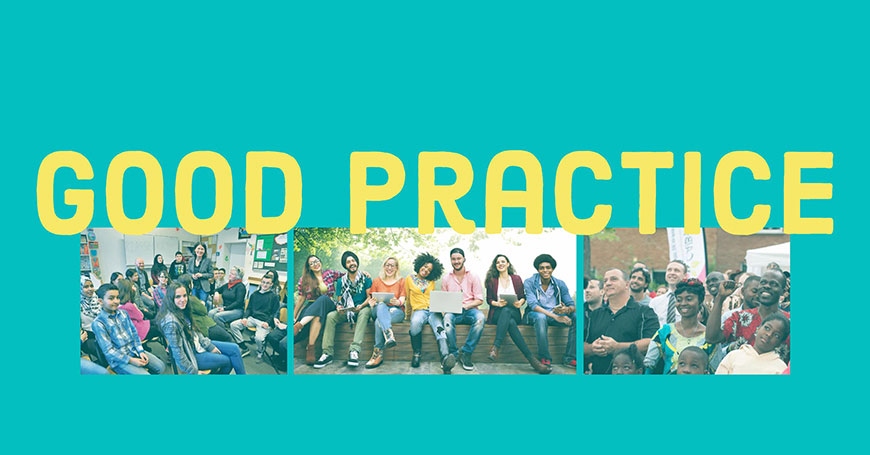Intercultural cities: good practice examples

The first step is the adoption (and implementation) of strategies that facilitate positive intercultural encounters and exchanges, and promote equal and active participation of residents and communities in the development of the city, thus responding to the needs of a diverse population. The Intercultural integration policy model is based on extensive research evidence, on a range of international legal instruments, and on the collective input of the cities member of the Intercultural Cities programme that share their good practice examples on how to better manage diversity, address possible conflicts, and benefit from the diversity advantage.
This section offers examples of intercultural approaches that facilitate the development and implementation of intercultural strategies.
Campus Rütli
Purpose: A segregated and failing school is transformed into a centre of educational excellence Stimulus/Rationale: The Rütli school had become notorious all over Germany in 2006, when the...
EMPO Multicultural Resource Center
Purpose: The EMPO Multicultural Resource Center acts as a resource centre for migrants through providing information and counselling that enable participants to develop their own resources to...
Barcelona Centre for Linguistic Normalisation
Purpose: The Consortium for Linguistic Normalisation (CPNL) is a public body created from the common will of the Regional Government and numerous local, county and provincial councils with the aim...
XEIX
Purpose: The XEIX project aims at promoting commercial associations as a meeting point and generation of neighbourhood identity. The project is about fostering intercultural relations in...
The Copenhagen Host Programme
Purpose: The aim of Copenhagen’s Host Programme is to facilitate encounters between newly arrived migrants and Copenhageners who wish to volunteer as hosts to promote integration into Danish...
Action Plan for Inclusion and Diversity
Purpose: The city council of Bergen wanted to formally adopt a public statement of its intentions as an Intercultural city. Stimulus/Rationale: The primary driver for this initiative was political...
The Danish Centre for Arts & Interculture (DCAI)
Purpose: The aim of the Danish Centre for Arts & Interculture (DCAI) is to create a national platform that reflects the diversity of Danish society in the cultural sector, by building intercultural...
A Smile of a Child
Purpose: Therapeutic hospitality for refugees Process: Melitopol has taken in very many Internally Displaced Persons (IDP) as a consequence of the troubles in Crimea and Eastern Ukraine. “A Smile...
Democratic citizenship in Ansan
Under the Public Official Election Act of the Republic of Korea, only Korean nationals aged 25 or older may run for a local election. Those with foreign nationality are not allowed to be a...
Measuring cultural empathy
A sociological study on cultural competences in Ukraine, leading to policy development Melitopol is a city of the Azov region where, for more than 225 years, there has been a harmonious coexistence...


